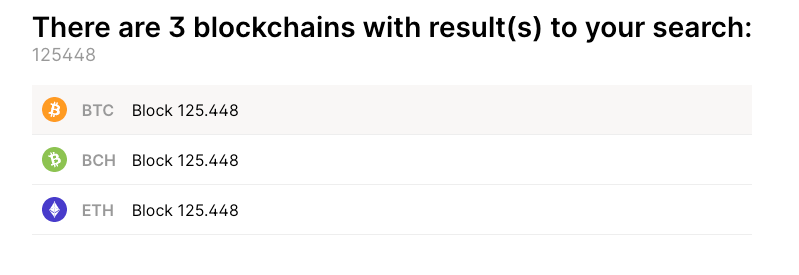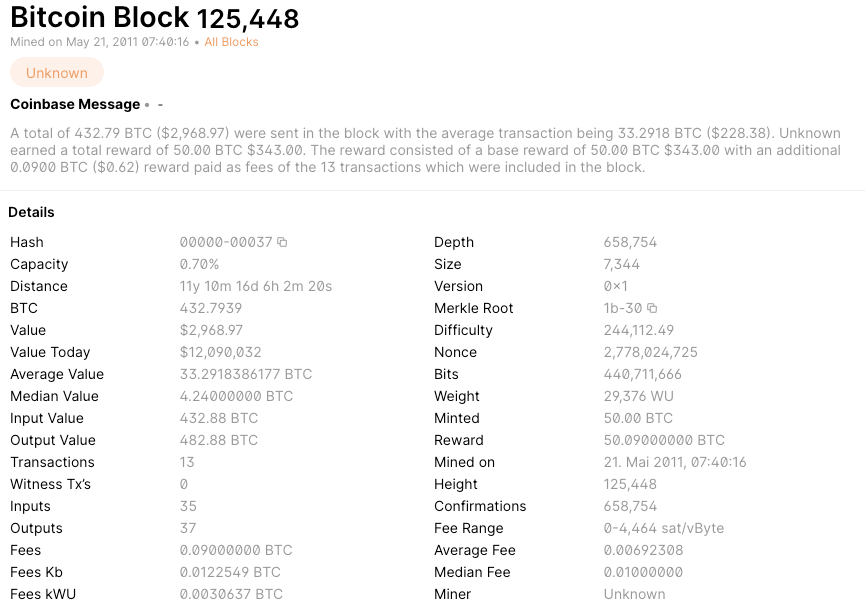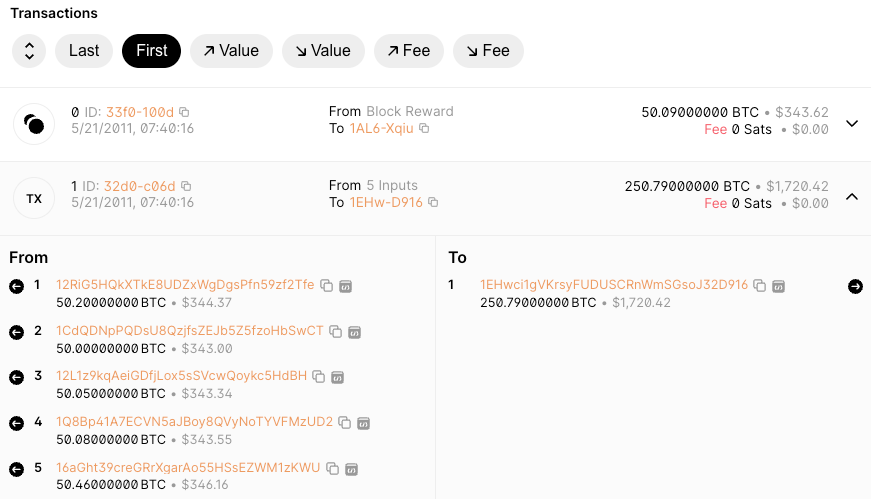How to Use a Block Explorer
Block Explorers are easy to use. Open the website and simply type the block number, the transaction hash, or the block hash into the search field and the block explorer shows you the information.
Here we use https://www.blockchain.com
- Open the website.
- Now, we want to get information about block no. 125448. Type the block number in the search bar and hit enter.

3. Choose the correct blockchain. In our case Bitcoin BTC.

Now, the block explorer shows us all the information about block number 125448.

You see the hash (0000000000001094b66fe851583e028b4096a490853577ce8ba897db99a00037). This is the block hash from Topic Proof of Work in Lesson 1.
You can see when the block was mined on the timestamp.
You see the difficulty value (244,112.49) we talk about in the topic Mining Difficulty in Lesson 1.
And you see the nonce (2,778,024,725) too.
If you scroll down, you can see all transactions in this block.
On the left side, all inputs of a transaction are listed and on the right side all outputs. As you can see, all transactions have a unique hash.
In our case there are five inputs and one output. In total the sender spent 250.79 BTC. The hash above the inputs is the transaction hash. It serves as an identifier for this transaction.

You can also search for block hashes or transaction hashes. Searching for a block hash basically gives you the same view as searching for the block number (or block height). When searching for a transaction hash, it brings you directly to the transaction details.
Now, we want to get the details for transaction b79204900118550fc83e5094a774309f09af0e058d3e95013b16496313137cfa
Again, you get a list with some basic information, and below, you get detailed information about every input and output.

